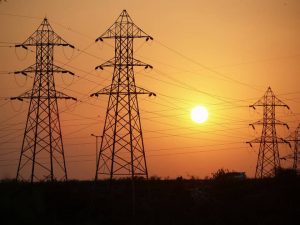For ages, I and many other solar advocates have been saying solar benefits all, not just those who own it, by reducing utility costs which should translate into lower rates for utility customers. Now, hard proof is emerging that these benefits are materializing as solar becomes established as the new energy standard.
How does solar benefit all? Through measures including these, which reduce utility costs:
- Reduction in peak demand during hot summer afternoons when so many people are making solar; this is also the time that electricity is the most expensive for the utilities to buy on your behalf so if they can buy less due to solar, all should benefit
- Reduction in the utilities’ need to build expensive new lines and facilities because so much solar generating capacity has been added.
Hard Proof
Two recent announcements offer up hard evidence that these benefits are in fact real:
In California, which has the most mature solar market in the U.S., “20 transmission projects were canceled and 21 were revised due to energy efficiency and residential solar power altering local area load forecasts. The projected savings from these changes is approximately $2.6 billion,” according to PV Magazine.
(Utilities probably weren’t too happy about that because “building stuff” is how they make most of their money, but that’s a different story, which I wrote a few weeks ago.)
The article goes on to say that “The daily peak was shifted from approximately 5:30 PM, till almost 9 PM” and that solar reduced peak demand by 6%. That’s an incredible impact for a relatively “new” energy technology.
Closer to home, the regional grid operator recently confirmed solar’s impact on addressing peak demand. ISO New England forecast that summer peak demand would rise at a compounded annual growth rate of 0.8% over the next 10 years, unless you factor in energy efficiency and solar, in which case peak demand decreases by 0.4%. Read more at Utility Dive.
Again, reduced peak demand should translate into fewer new transmission projects, lower procurement costs for the utilities, and cost savings for ratepayers.
What’s Next
Of course, even though these benefits are now being quantified, it remains to be seen how much of the cost reductions regulators will require utilities to pass on to electricity customers.
For links to eight state-sponsored studies confirming solar provides a net benefit to all, see this post I wrote a while back.
And, I’ve been speaking regularly about the need to transform the utility business model to reflect industry changes like the ones discussed above. If you’d like me to address your group, shoot me an email or call our office at 978-567-6527 and ask for Kim.
If you liked this article, you might also enjoy:
- How Electric Utilities Make Money
- Net Metering is Not a Subsidy
- Ironically, Customers Losing as Net Metering Hits the Big Time



 Download our 7 FAQs
Download our 7 FAQs


No comments yet. You should be kind and add one!
The comments are closed.